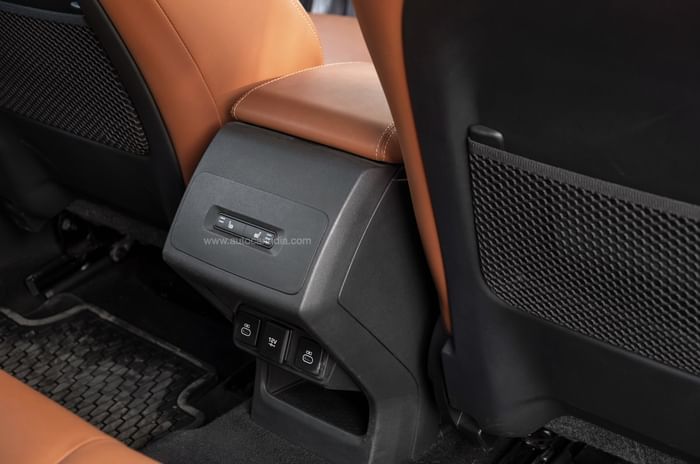When we last brought this segment together for a comparison test, we realised this was the hotbed of EV development, with trends set here filtering down into the mainstream. Sure, there are more expensive, more advanced EVs in the market, but really, it’s this lot of luxury SUVs that cost just over a crore that set the template. After all, they’ve got the three things everyone wants – an electric powertrain, an SUV body style (mostly), and a prestigious badge on the nose. Perhaps more telling is that our last go at this segment was barely two years ago, and only one of the EVs has returned unchanged. That’s progress.
The EV in question is the Jaguar I-Pace: at five years old, it’s the oldest car here and the pioneer of this segment that came in with a stylish, if unconventional bang. Next to join the ranks was the BMW iX, which also went down the stylish and unconventional route, and became the bestselling luxury EV in India last year. Last time’s winner, the Audi e-tron, was rebranded the Q8 e-tron with a facelift, and though there’s a bit more pizzazz this time around, its philosophy remains to stick to the familiar rather than do anything too radical. And finally, there’s the Mercedes-Benz EQE SUV, a step up from the EQC it effectively succeeds, and one which aims to fix some of that car’s fundamental flaws.

Luxury EV SUV comparison: exterior
On the looks front, the EQE makes a concerted effort to be different from its ICE counterparts, with a design dictated by aerodynamics that results in a drag coefficient of just 0.25. The lights, faux grille and door handles sit flush with the bodywork, which itself is almost perfectly smooth. However, it doesn’t have quite the grandiose presence of traditional Mercs. It does at least look large, which is interesting because the Q8 e-tron is actually larger. Based on the ICE Q5’s platform, it follows a traditional two-box SUV shape (there is a Sportback coupé version if you want a bit more flair), and it could get lost in a crowd for looking too much like every other Audi SUV.
The BMW iX won’t have this problem, because even though its shape is fairly straightforward, the details certainly aren’t. It’s radical even by BMW’s own recent standards, and though it’ll definitely turn heads, it’s very polarising, especially that huge vertical faux grille. Yet, amazingly, it and the others are outshone in the attention-grabbing stakes by the oldest car here. The I-Pace eschews an SUV body style altogether in favour of a high-riding but low-slung fastback form, painted over with the elegance of Ian Callum-era Jaguar design. It’s aged incredibly well and continues to look like nothing else on the road.
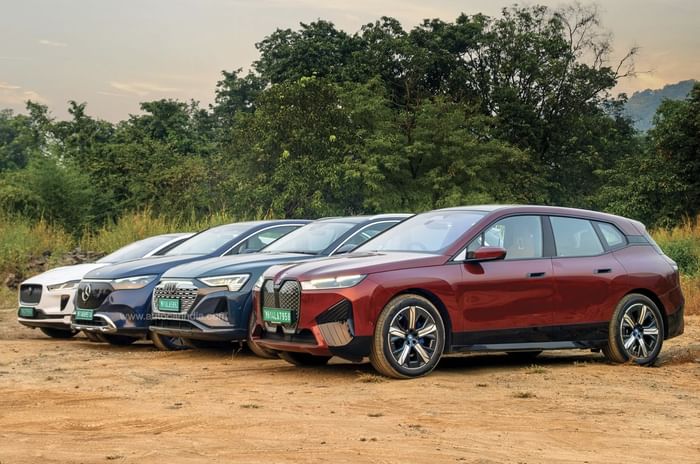
Though the EQE SUV and iX are the newest platforms here and use dedicated born-EV architecture, neither has a frontal luggage area or ‘frunk’, and you can’t even open their bonnets. The Jag has a nominal 27 litres up front, while the ICE-based Q8 e-tron has a useable 62 litres where an engine used to be. The Audi has the most useable rear boot too, owing to the fact that its spare tyre sits in a dedicated recess under the floor. The other three have a spare tyre taking up boot space, though once again, the diminutive Jag surprises by having the biggest volume on paper – 656 litres. The load area is long rather than tall, though. Some might argue that boot volume is not relevant in EVs because they will rarely leave city limits, but these are big SUVs, so they still could be used on airport runs and to transport things within city limits, and as you’ll see later, they have pretty good range too.
Luxury EV SUV comparison: interior
Similarly, for all their cutting-edge cockpit tech and addictive acceleration, like any big luxury SUV in India, they also have to be evaluated as chauffeur-driven vehicles, so let’s start with the back seat. The EQE SUV seems like it would ace this with its large and airy cabin. You don’t need the protruding exterior step to enter, though you might want to wipe your shoes on it, because the all-white interior (including the floor mats) gets filthy instantly; there is an all-black option too, though. You sit high, and width and leg room are plentiful, with ample space under the front seat for your feet. However, the seat squab is unusually short, the backrest is upright, and the tall seat height means headroom is only decent.
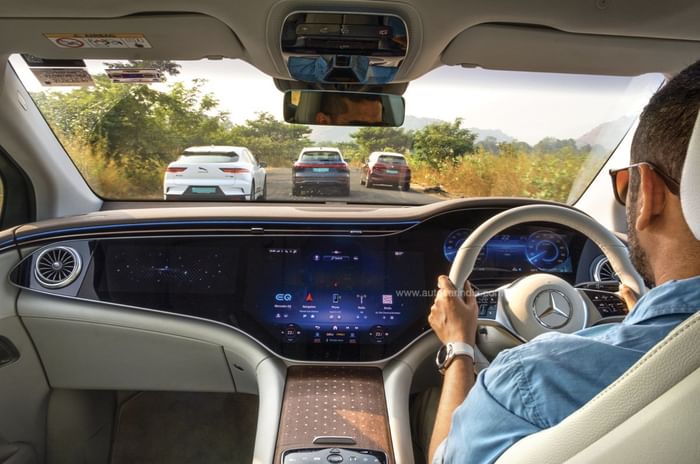
The Q8 e-tron’s back seat is spacious, and this will be a recurring theme – very similar to every other Audi SUV – which is largely a good thing. The seat height and backrest recline angle are just about perfect, and the squab is long enough to give good thigh support. The cushioning could have been a bit softer though, and it’s better for two, as the central AC console intrudes quite far back. It also has the smallest sunroof in this test, but then it’s the only one that provides rear window blinds, which, in our mostly sunny climate, is a very handy thing.
The iX is the most surprising as its rear bench appears rather flat and nondescript. However, the cushioning is soft and thick, and extends up to the doors, wrapping around passengers like a large wing-backed sofa. Space is ample too in all directions, the windows are large, and there are even speakers in the headrests. They’ve even utilised the skateboard platform’s lack of transmission tunnel to scoop out space under the central AC vents for a middle passenger to place their feet. If one were to nitpick, the bench is set a little lower than ideal, and the seatback angle could have been a bit more reclined.
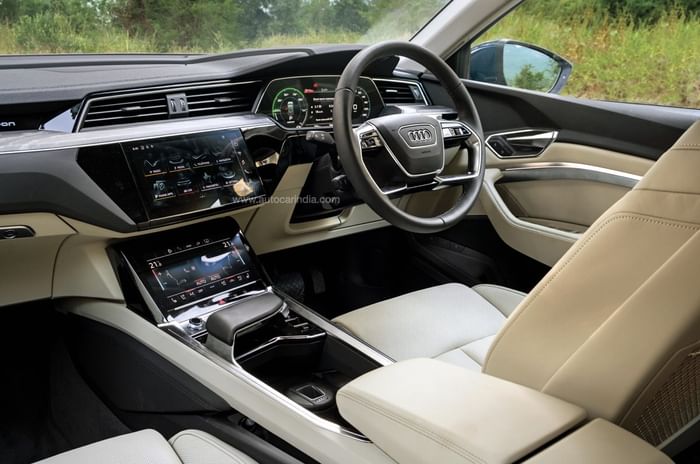
Once you duck and fold yourself under the low roof and into the I-Pace’s back seat, you’ll find it’s very reclined, and that’s how they’ve managed to find space back here. Unlike in the others, there’s no ‘theatre’ seating, and instead you’re sat as low as the front seats. It gives you an interesting, sporty capsule-like feel, and to be fair, there is good leg room and support. Headroom, however, is the least of this lot, and the small windows make you feel hemmed in. Certainly not the EV to choose if you’re chauffeur-driven.
No, the Jag is all about the sporty side of EVs and that’s made clear at the front. Instead of utilising its skateboard platform to free up more space, it uses it to emulate a sportscar interior as best as it can. The roof is already low and thus, so is the seating position, with a dashboard that starts far ahead of the steering wheel and peels back to a very angular central console. There’s a wireless charger tucked under the floating dashboard, and you feel very cocooned in the driver’s seat. The cockpit is something of a mishmash of materials and surfaces, which does detract slightly from the slick look, and while quality is good, it’s not quite up there with the rest. Quirky touches include a button-style drive selector, and JLR’s intuitive push/pull rotary knobs for the AC and seat ventilation controls. In fact, there are physical buttons for everything – drive modes, air suspension and more, and while you might think this dates the Jag, it’s frankly the easiest system to use on the move, as we’ll soon see.
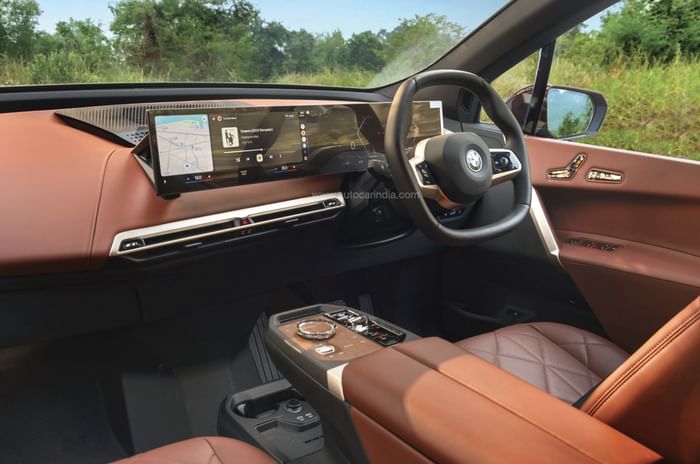
The BMW iX, too, is a fine example of optimal use of a skateboard platform. The dashboard is low and pushed back, and with no need for a transmission tunnel, there’s nothing underneath it either. And while this serves no practical purpose, the sense of space it affords is tremendous. There’s a console between the seats, complete with drive controls, wireless charger, USB ports, storage box and cupholders, but it doesn’t join the dashboard. In fact, the whole design is minimalist, rich and futuristic, with vertical slashes on the dash and doors, crystalline switchgear (including a new toggle to replace the shift lever), push-button electronic door latches, and a floating iteration of BMW’s dual-screen infotainment system. An area where it gets perhaps too radical is the steering ‘wheel’, which is actually a hexagon, and can feel odd when making U-turns or parking. Quality is hard to fault, and you’d struggle to find a poorly finished bit in plain sight.
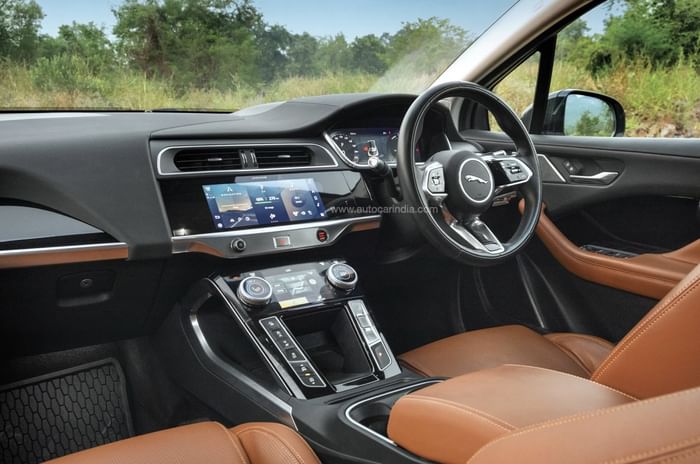
This is true of the Q8 e-tron as well, which feels characteristically well turned out. However, like with the exterior, it’s a bit too similar in here to both the pre-facelift version and also every other Audi SUV. The advantage of the conventional interior is that it’s familiar, and everything is where you expect it to be. There’s rich open-pore wood on the dash, and interesting elements like the ‘trigger’ drive selector and exposed centre storage bay return, but a little more flash would have gone a long way in a Rs 1.2 crore EV. Also unchanged are the dual touchscreens and Virtual Cockpit digital dials that, though crisp, intuitive and once the benchmark, are starting to show their age. In fact, the limited SOC and charging data on display is a big oversight that should have been addressed with the facelift.
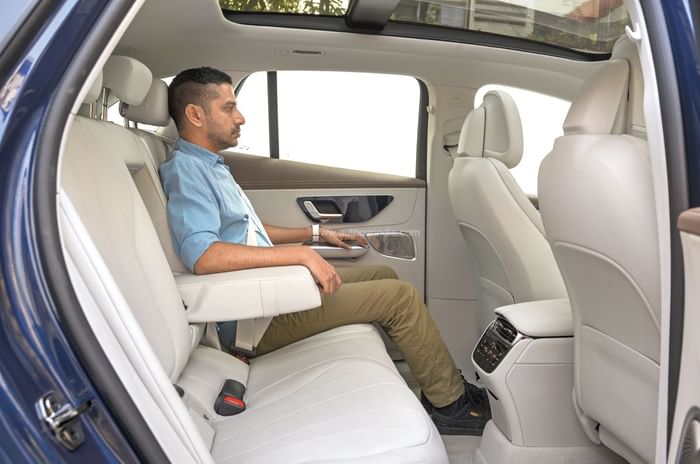
The EQE SUV’s interior, meanwhile, has no shortage of wow factor, and that’s largely thanks to the Hyperscreen: it’s a digital dashboard made up of three screens under a single flat panel. It has to be said, though, that this surface is a dust and fingerprint magnet in our conditions and picks up reflections during the day. Then there’s the ambient lighting, and while all these SUVs have some, it is the EQE’s whole identity – it’s in the doors, the speakers, the footwells, the roof, the dashboard, and even the seats, giving the ambience of a cool night club. Cabin quality, too, is superb, and a particular standout is the slide-open cover for the centre console, finished in open-pore wood and embedded with three-pointed stars. Also worth pointing out are the fiddly touch-sensitive steering and seat controls, which are, quite literally, a hit or miss. And though this uses a skateboard platform like the BMW, the huge centre console and dashboard don’t give you the same sense of space.
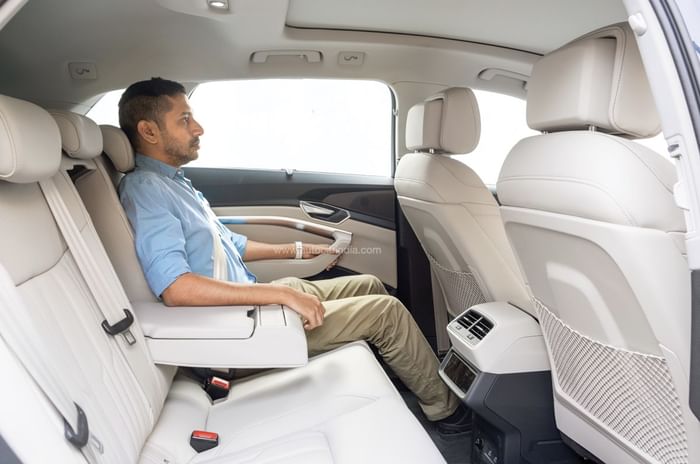
Luxury EV SUV comparison: features, tech
But perhaps that’s all worth it for the brilliant Hyperscreen, which is the best infotainment system here. Yes, it’s fairly obvious that it’s not one seamless 56-inch screen, but it doesn’t matter because the central 17.7-inch screen works so well. It’s bright, sharp, responsive and incredibly powerful, and there’s a wealth of data and infographics on offer. The digital dials, meanwhile, have interesting and intuitive configurations, while the passenger screen is more likely to be used as a conversation starter, as the main screen is simply better.
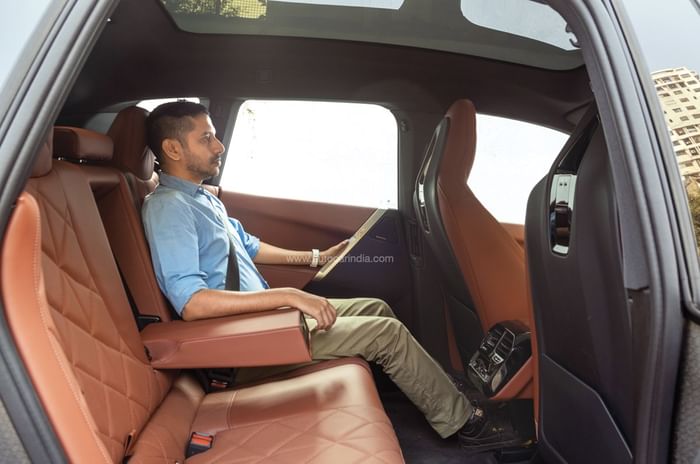
The BMW’s 14.9-inch touchscreen may not be as big or in your face, but it’s not short on pizzazz. The home page treats you to large, animated widgets showing helpful data and info, and it too is quick and smooth to use. Once you get past the home page though, you’ll find a glut of icons and sub-menus, like a phone with too many apps installed, and here’s where it starts to get frustrating. Related functions are split off into several sub-categories, and the ease of use that BMW’s i-Drive once stood for is all but gone. The instrument screen too feels like form over function, with graphics that are more distracting on the move than helpful.
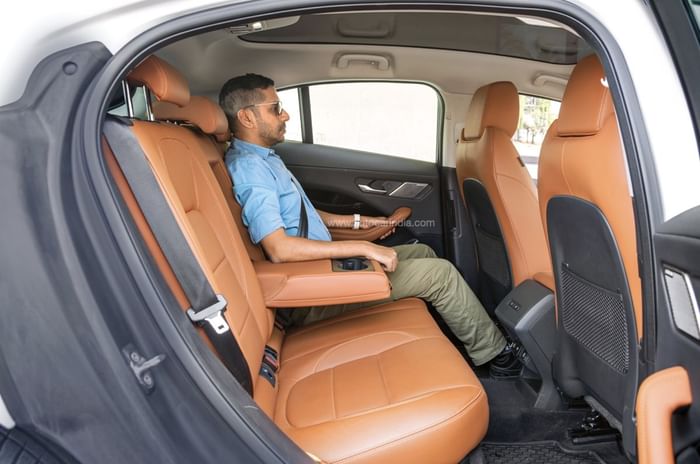
The first thing you’ll want to do with the Audi’s touchscreens is turn off the haptic feedback, because then you don’t have to jab hard for every function. As mentioned before, it’s easy to use but no longer the quickest or slickest in this company. The dials, too, lack much configuration and are best left to their default setting, while the HVAC control touchscreen is placed so low, you have to seriously break eye contact with the road to use it.
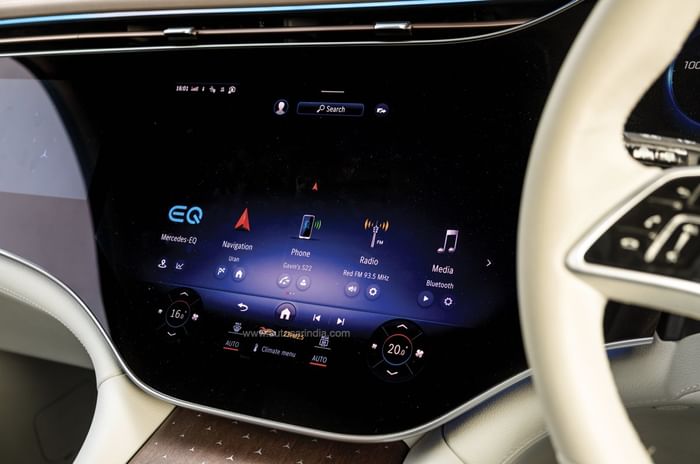
All three German SUVs suffer from a dearth of physical controls, though. The Audi has a volume knob and a shortcut for the parking assists, but that’s it; the BMW has the classic i-Drive rotary controller, but the software is so cluttered, it’s easier to just touch the screen, while the Merc has no physical buttons outside the start/stop button, but at least its screen is the most responsive.

The Jaguar, meanwhile, quietly does things rather well. As mentioned earlier, there are physical buttons for HVAC and all drive functions, and though the touchscreen may seem small, it’s the one that gives the most battery, range and charging data. The digital dials do feel a bit old now, but there is still a good level of customisation on offer.

As tested, all four EVs are well-equipped, but the Audi and Mercedes lead the charge, with the BMW following a bit lower down, and the Jaguar lower still. However, it should be noted that while everything on the Mercedes is standard, in the BMW, you can have optional air suspension, which our test car did not. In the Audi, the front seat heating, cooling, massage and memory are optional, as are park assist and some cosmetic add-ons. The Jaguar’s options, meanwhile, include fog lamps, air suspension, adaptive dampers, rear climate control, headlamp washers, a cooled glovebox and even the public charging cable; much of which should have been standard.
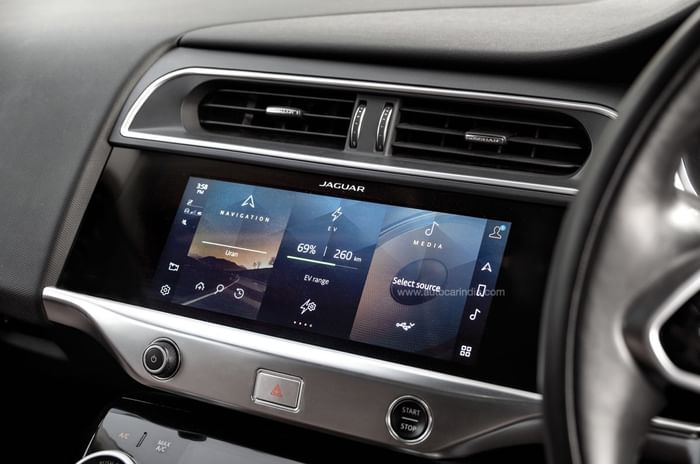
Luxury EV SUV comparison: range
Let’s talk EV numbers and here’s where the real disparity starts to show. The Mercedes and Jaguar are pretty close on battery capacity at 90.56 and 90kWh, respectively, while the Audi with its facelift has jumped up to 114kWh. The BMW, meanwhile, has just a 77kWh battery, and this showed in our real-world range test. In a mix of city and highway conditions, the iX only returned 356km on a full charge, while the I-Pace came in next with 410km. The real surprise is that the EQE SUV got ahead of the Q8 e-tron, with 480km versus 460km, despite having a smaller battery. Our calculations revealed that the Audi’s efficiency was the lowest of the lot, at just 4.03km/kWh, while the EQE’s was the highest at 5.3km/kWh. The iX returned 4.6km/kWh, while the I-Pace gave 4.5km/kWh.
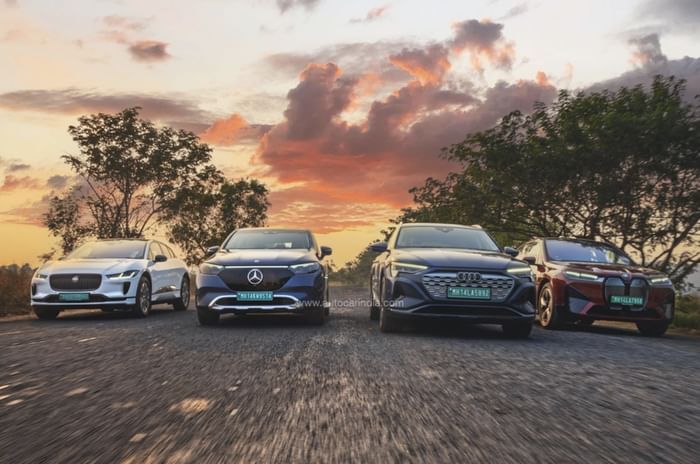
Clearly, Mercedes’ focus on reducing drag has paid off. One reason why the Q8 e-tron isn’t as efficient is possibly because Audi’s drive modes don’t work very differently from one another, and its regen isn’t very strong, warranting regular manual intervention via the paddles. The Mercedes, meanwhile, has a clear distinction between drive modes and regen modes, which can be combined as desired. Frustratingly, the BMW and Jaguar don’t have paddles to adjust the regen on the fly, requiring you to set your desired regen level from inside the touchscreen, though pulling down on the iX’s drive selector while in ‘D’ activates ‘B’ mode that instantly gives max regen and one-pedal driving. In the Jag, you can’t switch regen entirely off; it’s either low or high.
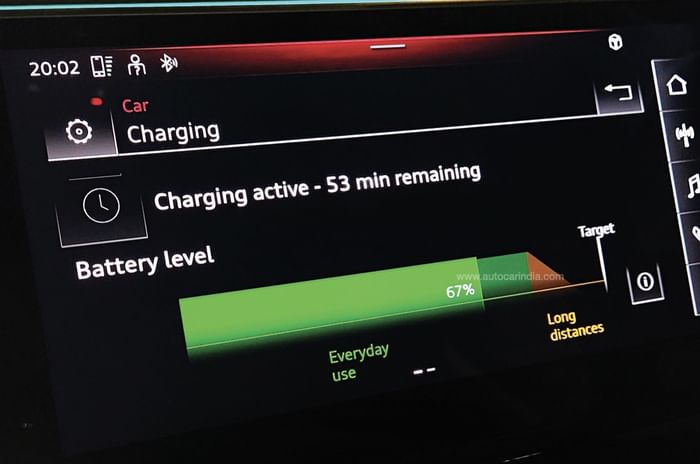
When it comes to charging, all four get 11kW AC charging capability as standard, but Audi lets you upgrade to 22kW as an option. When it comes to DC charging, the Jag maxes out at 100kW, the BMW at 150kW, while the Audi and Merc can do 170kW: if you can find a charger fast enough. While not all manufacturers quote all the charging times, you can expect between 8-10 hours to get to 100 percent on an AC charger, or around 30 minutes to get to 80 percent on a DC charger at their respective max speeds.

Luxury EV SUV comparison: performance
But now, on to the speed, and all cars use dual motors, single-speed gearboxes and AWD to deliver their power. The EQE and Q8 produce 408hp (or 300kW), with the I-Pace not too far behind at 400hp, and the iX trailing with 326hp. It’s in torque, however, that the Merc’s 858Nm trumps all the others, whose figures start with a 6. This allows the EQE to crack 100kph the quickest, at 4.8sec, followed closely by the relatively lightweight I-Pace at 5.04sec. The e-tron and iX bring up the rear with 5.7sec and 5.9sec, respectively, and while the BMW is simply down on power, the Audi delivers its power very gently.
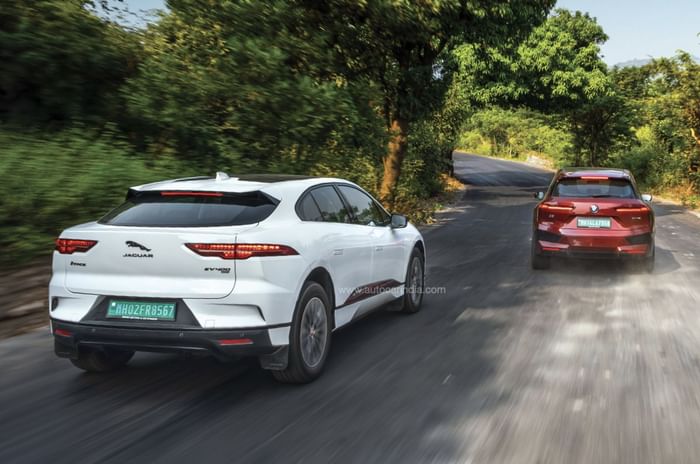
While that won’t win it any drag races, it does make the power more manageable in everyday driving, and ironically, this is the only car that doesn’t have a creep mode. The EQE SUV and iX, on the other hand, feel more like an on/off switch in their acceleration, and require some modulation to drive in traffic without lunging forward at the car in front of you. The I-Pace, meanwhile, deserves credit for feeling progressive and powerful at the same time, with a strong performance that’s easy to manage. In fact, the Jag is by a long shot the most enjoyable to drive, with power delivery more akin to the ebbs, flows and revs you get from an IC engine. For those who like that instant and even addictive instant acceleration, you’ll get your thrills with the rocketship-like thrust of the Mercedes and BMW, while the Audi simply feels too sedate for a car with 408hp.
Luxury EV SUV comparison: ride and handling
The I-Pace’s fun-to-drive nature extends to the handling, with a wonderfully fluid steering and the best body control, no doubt helped by the lightweight, compact dimensions and low centre of gravity. The BMW tries to emulate this but it’s simply too tall and heavy with a suspension that’s tuned for comfort, and steering that’s quick but not sharp or feelsome.
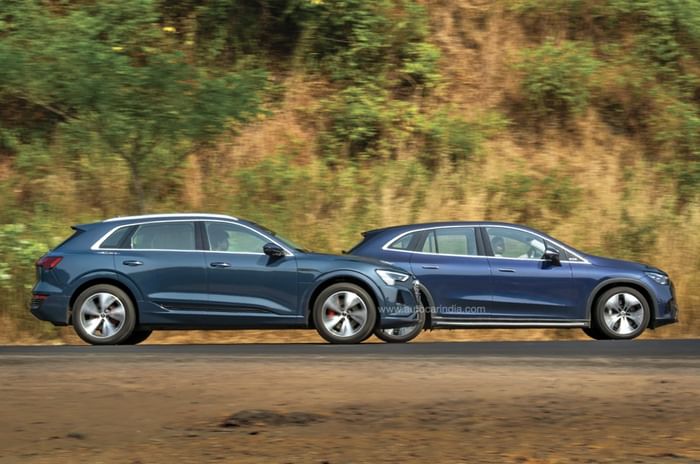
The Audi once again feels like its ICE brethren, which is to say tidy and competent, but not outright exciting – it masks its weight (the heaviest at 2,510kg) well with good body control, but the steering is too slow and lifeless. The Mercedes, however, feels the most ungainly from behind the wheel, with vague and artificial steering, huge body movement from its soft suspension and a top-heavy sensation at all times. It’s not helped by its brakes which feel wooden and weak, and this shows in its braking performance, which is the worst of this lot.
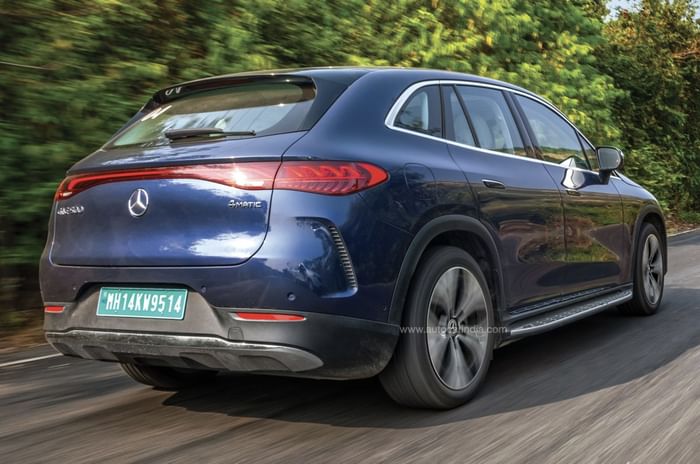
The EQE SUV’s soft suspension translates to a comfy ride; at low speeds, this electric Merc does emulate that S-Class-like floaty softness and glides over bad roads quite well. But if you go slightly quicker, it feels too soft even in Dynamic mode, and on a bumpy road, it tends to bob up and down and even rock from side to side. And though the air suspension fixes the old EQC’s ground clearance issue, you can still ground the belly on speedbreakers if you’re not careful.
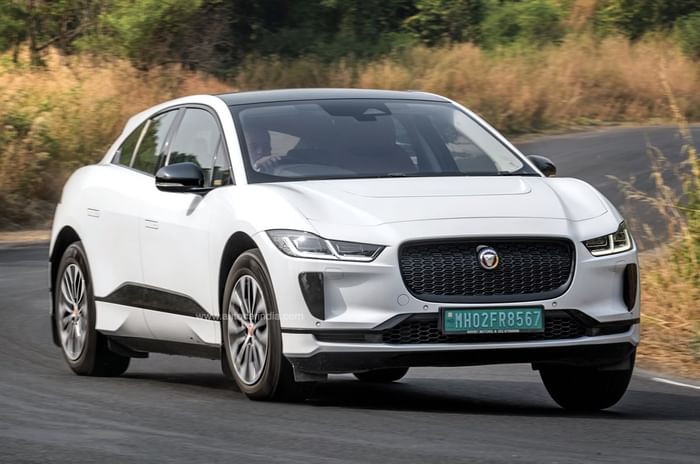
The BMW iX didn’t have the optional air suspension, but the good news is ground clearance is still a substantial 202mm on steel springs, and it never grounded once. More telling is that overall, this car without the fancy suspension has the best ride quality, mixing low-speed absorption and high-speed stability well. The Audi comes in next with ride comfort that’s absorbent, but still has that typically European slight firm layer to it, while the I-Pace, though incredibly stable at speed, is simply too stiff at low speeds – even on its optional air suspension – compared to the rest.
Luxury EV SUV comparison: price, verdict
What’s impressive is that, despite them being in the same segment, each of these luxury EVs offers something different, and moreover, each one has at least one trait compelling enough to make certain buyers choose it over the rest.
For the Jag, it’s driving pleasure – a rare commodity in an EV – and if that’s what you seek above all else, it should be your choice. It’s also stunning to look at and will get you more attention than any of the others. However, it loses out because it’s not as spacious, practical or comfortable as the rest, and so much basic stuff for a luxury vehicle is optional.

Where the Jaguar makes an emotional connection, the Audi does not. But when it comes to delivering the goods, the practical and no-nonsense Q8 e-tron is the best all-rounder and comes close to class best in most areas too. There’s very little that it does wrong (better EV data on screen would have been nice). Whether you’re at the wheel or in the back seat, it delivers a likeable experience but not an enjoyable one. At this price, EVs should look and feel more dramatic, and that’s really the Q8 e-tron’s only serious failing.
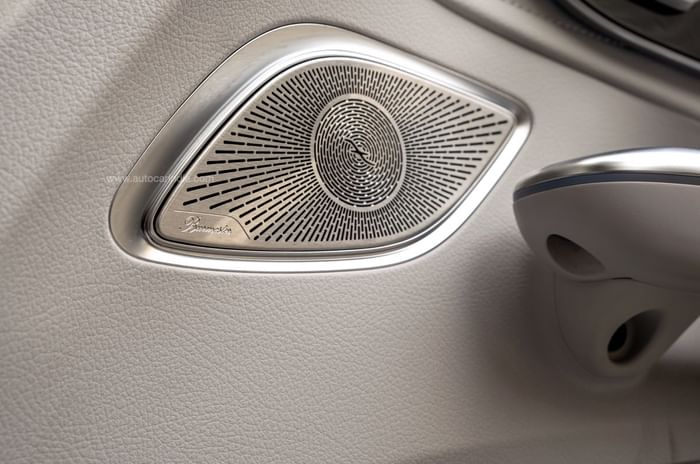
The EQE SUV delivered the best numbers for range, performance and refinement in our tests, so if your priority is long-distance driving, it should be your pick. The bold, rich and feature-packed interior with its Hyperscreen will no doubt be a big draw, but when it comes to one big luxury fundamental – back-seat comfort – the Mercedes is uncharacteristically behind the curve. But what also hurts it is the price: at Rs 1.39 crore, it’s a full Rs 13 lakh-18 lakh more than the rest.
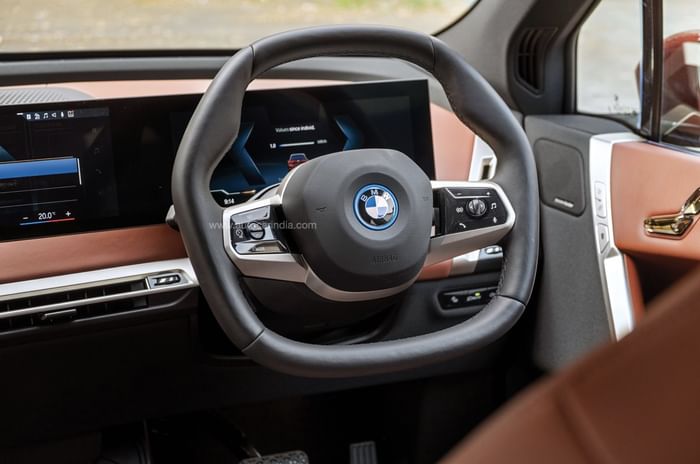
The iX is down on range by a full 100km, and if you intend to venture out of town frequently, that will no doubt be a deal breaker. However, if like most luxury EV owners, you use it only in the city and have another vehicle for outstation duties, you’ll find the BMW delivers the most, and is the most affordable at Rs 1.21 crore. Apart from looking striking inside and out, its cabin makes clever use of space, it has the most comfortable seats, great ride quality, and it’s not short on tech, features and fun too. And all BMW has to do to bring it on par with the rest on range and performance, is launch the higher-spec iX50 that’s available overseas.
